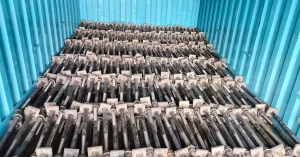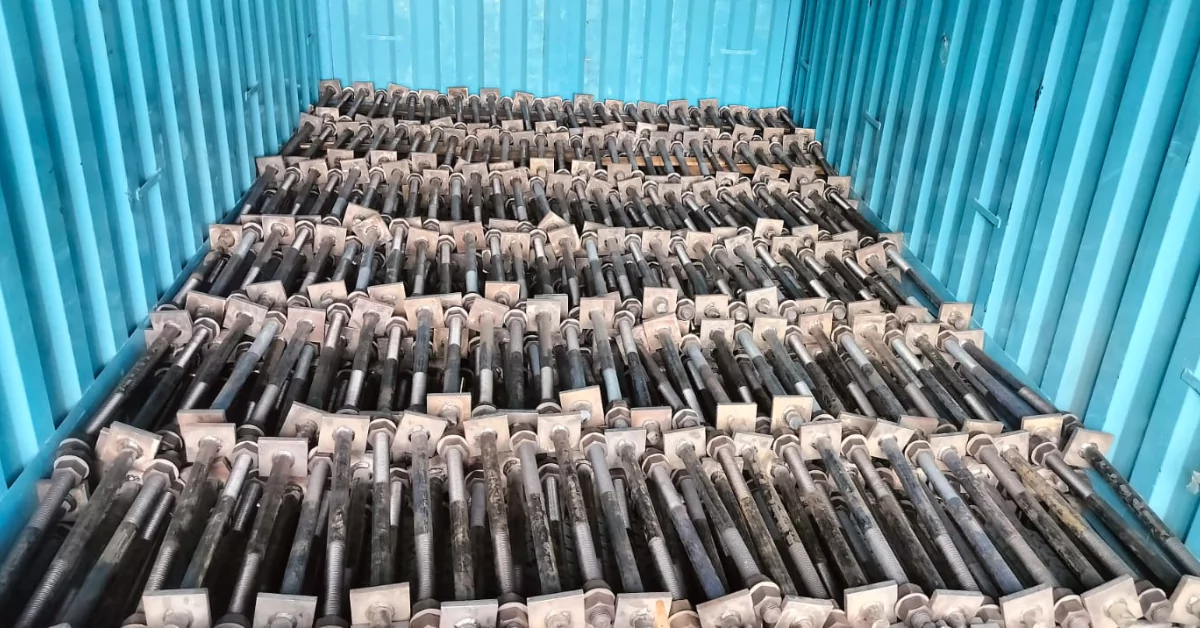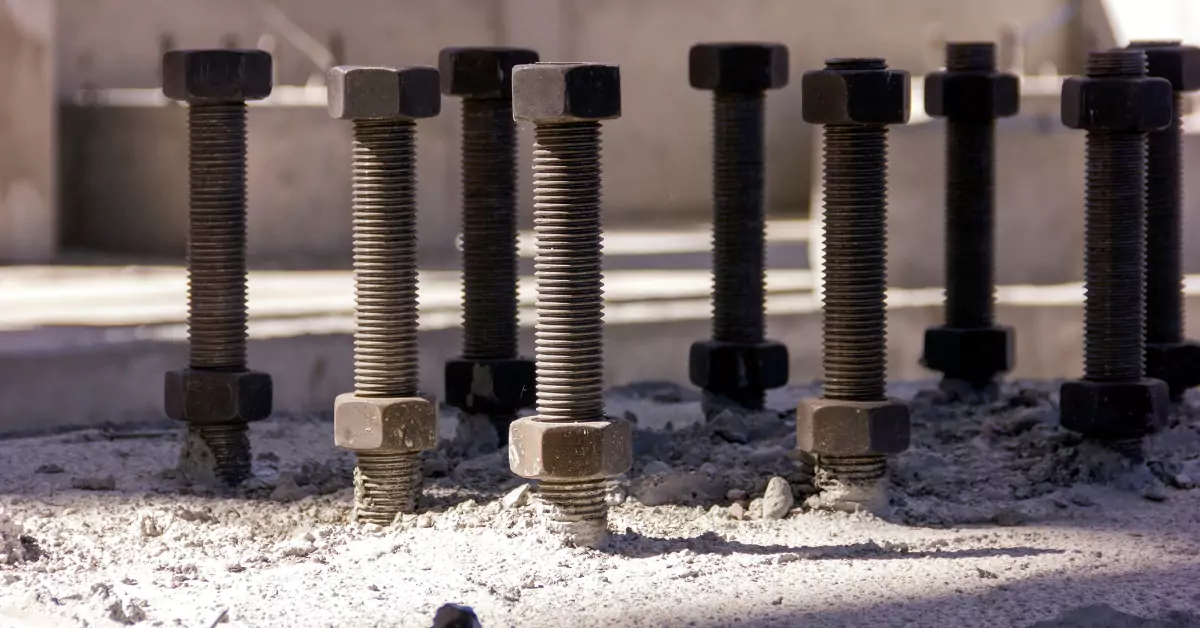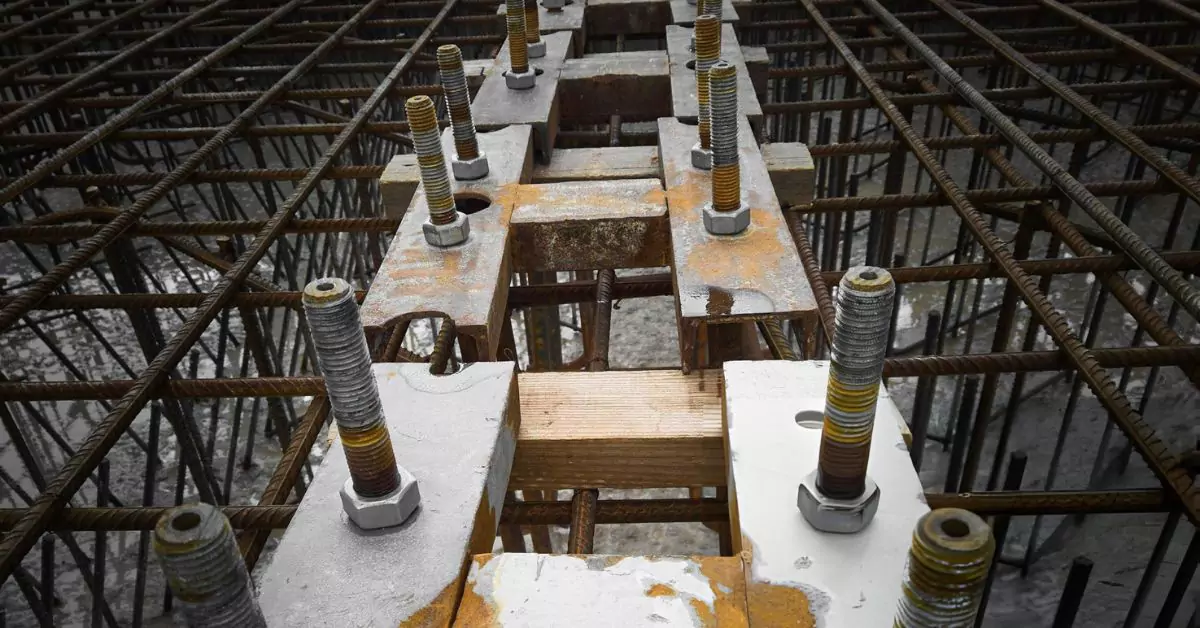Foundation Bolts vs Anchor Bolts: Key Differences Explained
When working on construction projects, choosing the right fastening solution can make the difference between a structure that stands strong for decades and one that fails under pressure. Two critical components in structural connections are foundation bolts and anchor bolts terms that are often used interchangeably but serve distinct purposes in construction applications.
Understanding these differences isn’t just academic knowledge. Whether you’re a structural engineer designing a new building, a contractor installing heavy machinery, or a project manager overseeing construction work, selecting the wrong bolt type can lead to structural failure, safety hazards, and costly repairs.
This guide explores the fundamental differences between Foundation Bolts and Anchor Bolts, their specific applications, and how to choose the right option for your project. By the end, you’ll have a clear understanding of when to use each type and why it matters for structural integrity.
What Are Foundation Bolts?
Foundation bolts are heavy-duty fasteners designed to secure structural elements to concrete foundations during the initial construction phase. These bolts form the critical connection between a building’s superstructure and its foundation, transferring loads from columns, beams, and other structural members directly into the concrete base.
Purpose and Applications
Foundation bolts serve as the permanent connection point between steel structures and concrete foundations. They’re cast directly into the concrete during the pouring process, becoming an integral part of the foundation system. This permanent installation method ensures maximum strength and stability for the entire structure.
Common applications include:
- Securing steel columns to concrete footings
- Attaching precast concrete elements to foundations
- Connecting structural steel frames to foundation walls
- Anchoring heavy industrial equipment to concrete slabs
- Fixing bridge girders and other infrastructure elements
Installation Process
The installation of foundation bolts requires precise planning and execution. During the concrete pour, bolts are positioned using templates or anchor bolt cages to ensure accurate placement. The concrete then cures around the threaded portion of the bolt, creating a mechanical bond that can withstand significant forces.
Key installation steps include:
- Positioning bolts according to structural drawings
- Securing bolts in place using temporary supports or templates
- Pouring concrete around the embedded portion
- Allowing proper curing time before applying loads
- Final positioning adjustments if required
Understanding Anchor Bolts
Anchor Bolts are post-installation fasteners designed to secure objects to existing concrete or masonry surfaces. Unlike foundation bolts, these fasteners are installed after the concrete has fully cured, making them ideal for retrofit applications and situations where precise bolt locations weren’t predetermined.
Purpose and Applications
The primary purpose of anchor bolts is to provide reliable fastening to existing concrete structures. They work by expanding within the concrete or by bonding chemically to create a strong connection that can resist both tension and shear forces.
Typical applications include:
- Mounting equipment to existing concrete floors
- Securing safety barriers and handrails
- Attaching architectural elements to concrete walls
- Installing HVAC systems and ductwork supports
- Retrofitting seismic upgrades to existing buildings
Installation Process
Anchor bolt installation involves drilling into existing concrete and inserting the fastener using mechanical or chemical methods. This process offers flexibility in positioning but requires careful attention to concrete condition and proper installation techniques.
The installation process typically involves:
- Marking and drilling holes to specified dimensions
- Cleaning debris from drilled holes
- Installing the anchor bolt using appropriate method
- Allowing cure time for chemical anchors if applicable
- Applying specified torque or tension loads
Key Differences Between Foundation Bolts and Anchor Bolts
Understanding the fundamental differences between these fastener types helps ensure proper selection and application for your specific needs.
Load-Bearing Capabilities
Foundation Bolts generally offer superior load-bearing capacity due to their deep embedment and integration with the concrete structure. The concrete cures around the bolt, creating a mechanical bond that distributes loads across a larger area of concrete.
Anchor Bolts, while capable of handling substantial loads, are limited by the concrete’s surface condition and the anchor’s specific design. Load capacity varies significantly based on anchor type, concrete strength, and installation quality.
Materials and Design Variations
Both bolt types are available in various materials and configurations to suit different environmental conditions and load requirements. Common materials include:
- Galvanised steel for standard applications
- Stainless steel for corrosive environments
- High-strength alloy steel for heavy-duty applications
- Epoxy-coated options for enhanced corrosion resistance
Foundation bolts typically feature longer embedded lengths and may include anchor plates or other devices to increase bearing area. Anchor bolts come in wedge, sleeve, chemical, and screw anchor configurations, each designed for specific concrete conditions and load requirements.
Installation Timing and Flexibility
The most significant difference lies in installation timing. Foundation bolts must be installed during concrete placement, requiring accurate positioning based on structural drawings. This provides maximum strength but offers limited flexibility for adjustments.
Anchor bolts can be installed at any time after concrete curing, offering greater flexibility in positioning and making them ideal for retrofit applications. However, this flexibility comes with some trade-offs in ultimate load capacity.
Best Practices for Selection and Maintenance
Choosing between foundation bolts and anchor bolts requires careful consideration of your specific application, load requirements, and installation constraints.
Selection Guidelines
For new construction projects where bolt locations are predetermined, Foundation Anchor Bolts typically provide the most reliable and cost-effective solution. They offer maximum load capacity and eliminate the risk of installation errors that can occur with post-installed anchors.
Anchor bolts are the preferred choice for retrofit applications, equipment installations in existing buildings, or situations where precise bolt locations cannot be predetermined during construction. They offer installation flexibility but require careful specification to ensure adequate load capacity.
Consider these factors when making your selection:
- Load requirements and safety factors
- Environmental conditions and corrosion potential
- Concrete strength and condition
- Installation timeline and access constraints
- Long-term maintenance requirements
Maintenance Recommendations
Both Foundation Bolts and Anchor Bolts types benefit from regular inspection and maintenance to ensure continued performance. Foundation bolts typically require less maintenance due to their protected installation, but should be inspected for corrosion, particularly at the concrete interface.
Anchor bolts may require more frequent inspection, especially in harsh environments. Look for signs of concrete cracking around the anchor, corrosion of exposed bolt threads, and any loosening of connections.
Regular maintenance should include:
- Visual inspection for corrosion or damage
- Checking torque values on critical connections
- Monitoring concrete condition around bolts
- Replacing damaged or corroded fasteners promptly
- Applying appropriate protective coatings when necessary
Making the Right Choice for Your Project
The choice between foundation bolts and anchor bolts ultimately depends on your specific application requirements, installation constraints, and performance expectations. Foundation bolts excel in new construction applications where maximum strength and reliability are paramount, while anchor bolts provide the flexibility needed for retrofit and modification projects.
At E S HAJI & CO., we understand that selecting the right fastening solution is crucial for project success. Whether you’re planning a new construction project that requires Foundation Bolts and Anchor Bolts for a retrofit application, proper specification and installation are essential for achieving optimal performance and longevity.
Take the time to evaluate your specific requirements, consult with structural engineers when necessary, and choose fasteners that meet or exceed your load requirements and environmental conditions. The investment in proper fastener selection and installation will pay dividends in structural reliability and long-term performance.
Foundation Bolts And Anchor Bolts

Foundation bolts and anchor bolts are essential fasteners in construction, differing in design, usage, and application. Foundation bolts provide structural stability, while anchor bolts secure structures to their foundations. Understanding their differences ensures proper selection for safety and optimal performance in projects.
Product Brand: E S HAJI And CO
Product In-Stock: InStock
5



